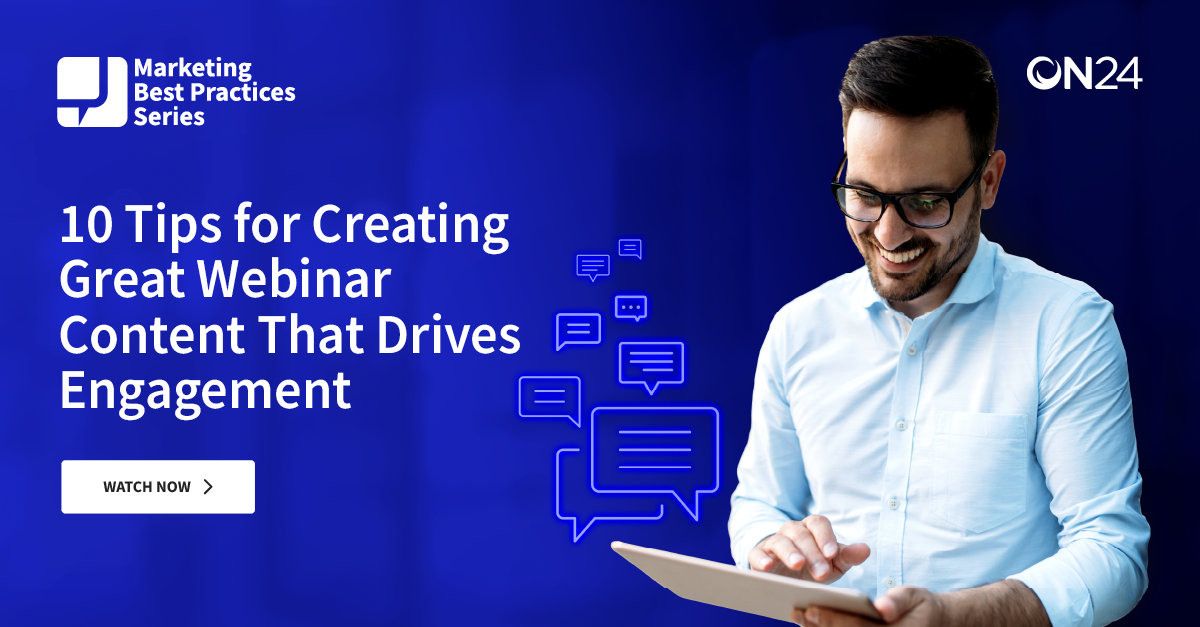What’s In a Name? Defining Digital Event Types

“A rose by any other name would smell as sweet.” — William Shakespeare, Romeo and Juliet
With so much of our time as marketers being consumed by the ideation, creation and execution of events in the digital realm, I’ve put together a lexicon to guide your marketing in 2021. It is important to have definitions because it gets confusing real quick. Much confusion has been created in the market with marketer’s worlds being upended and the scramble to create these digital experiences without having a strong terminology in place.
Before we jump into the definitions, I want to acknowledge that there are several ways presenters can create content for digital experiences, either ahead of time or live. However, I do not feel that the fact that a webinar is live, simu-live (recorded ahead of time), sim-to-live (pre-recorded portion that flips to live) or on-demand has a determination on the event type. In our all-digital world, we can expect there to be a blend of approaches for any given experience because of bandwidth issues .
What a Digital Experience Is
We need to start with the umbrella term: digital experiences. These are what we’re creating for audiences — this is important because you should never think of a digital experience as a “one-and-done” operation. You need to break experiences down and plan for pre-, during and post-event stages.
As someone who craves simplicity, I think about digital experiences in three major buckets defined by length and structure. These digital event formats include:
- Webinar. A tried and true fan favorite and continually rated by buyers as one of their preferred interaction types from SiriusDecisions Forrester Buying Study. They don’t need to be boring and slide and audio-only, but building out engaging webinars is an article series in and of itself. The length of an average webinar lands generally between 30 and 90 minutes with many marketers aiming for 45 minutes as a sweet spot.
- Digital Roadshow. This is a half-day compilation of content, basically the digital reincarnation of a field event. Remember those? Digital roadshows are three to five hours in length and feature a compilation of content and have regional preferences, i.e. starting at 9 a.m. EST for East Coast and a separate day running the event at 9 a.m. PST for West Coast attendees.
- Virtual Conference. These events are full-day or multi-day experiences and have the option for attendees to select between multiple session tracks. Additionally, virtual conferences have a marketplace experience for attendees to engage with multiple vendors.
What Affects Digital Experience Creation
As mentioned, these are the major buckets of event types, predominantly regulated by length. But there are some additional factors that can take place and make these digital experiences look and feel different. Here are examples of factors that can help you to distinguish between various types of digital events:
- Audience. You need to consider who you will be looking to engage with at an event in order to determine the appropriate messaging and promotion strategy. Also remember that you can have multiple audiences for an event, but be careful in the selection — because the “please everyone” approach will no doubt please no–one. Common audiences categories for digital experiences include prospects, customers, partners or industry analysts.
- Hosting. This is an important consideration since it certainly changes the control you have over the content and agenda. This will also determine your costs and responsibilities when it comes to planning and promotion.
- Funding. Companies also need to consider who will be funding the event. When it comes to digital experiences, the costs are no doubt far less than in-person — but this fact remains. There are three approaches, although they can be blended: attendee-funded (charging for tickets to the event), host-funded (paid for by the entity that is running the event) or sponsor-funded.
As you can see, by starting with the event type, you enable yourself to later add in further characteristics that will help to shape and form the experience. This by no means is a complete event brief but can serve as the cornerstone of your digital experience conversations. I’m getting an increasing amount of questions about the notion of hybrid events. But you’ll have to wait for another blog post to get my full take on how I think hybrid events will work in the short and long term.

